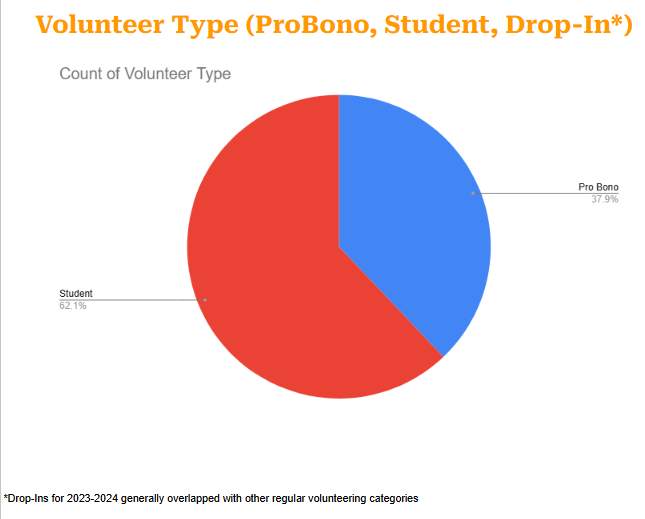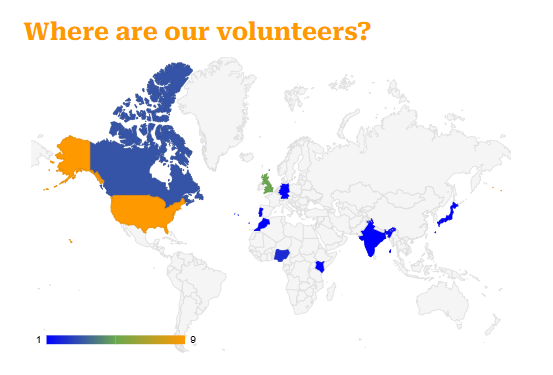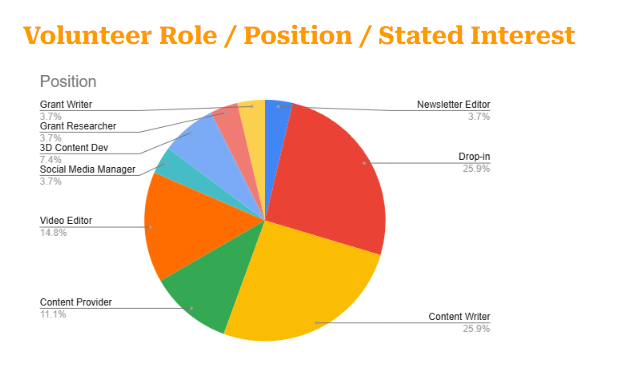iLRN’s Volunteer Program Report 2025

Immersive Learning Research Network (iLRN)
iLRN Strategic Report Series
iLRN’s Volunteer Program:
An Overview
Charlene Hardin
Volunteer Coordinator
May 2025
““Volunteering is not simply about what one gives—it is also about what one becomes through the giving.”
www.immersivelrn.org | CC BY-NC-SA 4.0
iLRN’s Volunteer Program: An Overview
Introduction
Volunteering in virtual worlds is a relatively new phenomenon with unique challenges. This document will provide an overview of the volunteer program structure, the challenges, and solutions the design is intended to address, review the volunteer experience as a user journey, analyze the current state of volunteering in iLRN, and finally, discuss the future goals of the volunteer program offered through the Immersive Learning Research Network (iLRN). Here, we examine the progress and vision of building a volunteer program devoted to immersive learning for a global community of scholars, practitioners, and enthusiasts.
Volunteer Program Structure
The volunteer program structure intends to meet volunteers where they are in terms of their availability, skill level, and interests. The framework created for volunteers maintains a clear flow from first contact to volunteer departure and allows individuals to interact reliably with iLRN. As part of this effort, we grouped volunteers into three main segments: drop-in, student, and pro bono volunteers.

Figure 1
Distribution of iLRN Conference Volunteers by Participation Tier. Student volunteers comprise 62.1% of participants, while pro-bono volunteers comprise 37.9%. Note: Many student volunteers also participated in drop-in activities, which are not represented in this figure.
The strategically designed three-tier framework accommodates diverse engagement preferences and organizational needs. At the most basic level, drop-in volunteers participate casually in event-based opportunities with minimal ongoing commitment and provide flexible support during conferences and special events. The intermediate tier consists of Student Volunteers who combine their academic interests with iLRN involvement. This allows students to gain practical experience and develop new skills, utilizing structured projects often aligning with coursework requirements and educational goals. Professors may recruit these volunteers directly or find iLRN through their search efforts. At the highest engagement level are Pro-bono Professionals who contribute specialized expertise through mentorship and high-value deliverables, leveraging their industry experience to advance the organization's mission while maintaining professional connections to the immersive learning community. Because iLRN is an all-volunteer organization, most volunteers are technically pro bono professionals providing their time and talents in leadership roles. This tiered approach enables scalable volunteer management that respects individuals' time constraints while maximizing organizational impact through appropriately matched contributions (Gaber et al., 2022). Ideally, student volunteers will grow to fill leadership positions within iLRN, contributing to the organization as pro bono volunteers.
Program Goals and Objectives
The primary objective of the volunteer program is to support iLRN's various activities, which are aligned with the mission to discover the best of what works in immersive learning. However, that is not the exclusive purpose. Additional objectives include growing the iLRN community of practice and nurturing a collegial environment within the discipline. Inherent to those latter considerations is the need to develop students as new talent by providing opportunities to gain experience and network with other professionals. Examples of these pursuits include co-creating virtual spaces, presenting in virtual formats, and helping others by capturing and editing videos or promoting immersive learning research through social media. The yearly conference is paramount. Even so, iLRN continues to strive to increase its offerings to include more webinars, virtual reality social events, and virtual campus gatherings to maintain a sustained presence throughout the academic year. A healthy volunteer program is essential to maintaining ongoing activities of this nature.
Recruitment Strategies and Channels
The volunteer recruitment strategy employs a multi-channel approach to engage diverse participants globally. The main avenue of outreach has been social media outreach centered on the organization's LinkedIn page, where regular content and information have been posted alongside links to the iLRN website and specific volunteer job postings. As the conference approached in 2025, this effort also included the creation of flyers and free volunteer job listings through LinkedIn's volunteer job board. These digital efforts were complemented by a monthly newsletter highlighting iLRN activities and upcoming opportunities. Supporting these recruitment channels was a suite of engaging video content created using Animaker, designed to convey the volunteer experience and organizational mission with content directed at sharing a message of growing volunteers into leadership roles over time. These videos served for both external recruitment and internal onboarding purposes. It has recently come to our attention that Canva, the platform most frequently used for creating social media graphics, also has a similar feature, which iLRN may explore as a potential alternative to Animaker for future video content creation.
A regular presence on the iLRN campus, Open Hours, hosted currently every Friday from 8 a.m. to 10 a.m. In addition to social gatherings like the 3D Book Club, meet-and-greets, and holiday parties, have increased interactions between various organization members while garnering attention from potential new volunteer recruits. These informal gatherings create a sense of place and presence that foster natural relationships in digitally mediated environments (Hennig-Thurau et al., 2022).
Resource Allocation and Management
Contact and availability information is kept in a regularly updated Volunteer Roster file shared across iLRN's leadership. The file includes information about volunteer projects and project leaders with contact information to facilitate communication. The global, all-volunteer nature of iLRN necessitates creating infrastructure that reduces communication barriers caused by differences in time zones and organizational roles that may generate unintentional information silos.
Our volunteer team worked to create unique experiences during seasonal gatherings and meetings and produced a regular iLRN Newsletter to keep iLRN members updated regarding immersive learning news and events. Open Hours, hosted weekly on Fridays, and efforts to increase usage and continued presence on the iLRN FrameVR campus serve as an additional resource for leadership and other volunteers to create serendipitous encounters and casual conversations mirroring the physical world of a college campus for our global members.
Volunteer Journey
The volunteer experience has been mapped as a user journey from beginning to end, with the hope that it will continue. We also understand that sometimes volunteers need to move on to other things over time, so protocols were created for a graceful exit. Recruitment serves as the first step in the volunteer experience, followed by onboarding, task assignments, timekeeping, regular check-ins to gauge satisfaction, and, finally, when needed, an exit survey.
The current recruitment strategies and channels include a list of volunteer roles and their proposed functions, social media posts (specifically on LinkedIn iLRN newsletter entries), and word-of-mouth by current members to potentially interested parties, especially professors to students. The volunteer page for the website contains a friendly, animated overview of iLRN, as an organization, and a quick Volunteer Drive and information sessions were held at the beginning of the iLRN academic year, and in April, ahead of conferences, to casually answer questions about the conference and introduce the iLRN campus.
Once volunteers express an interest in a role, onboarding begins. This is generally initiated by email contact through the volunteer email address for iLRN or the form accessible on the iLRN volunteer webpage. The current form, handled by Tally.io, seamlessly integrates with the InVision Community platform that hosts the immersivelrn.org website and forum.Tally.io, in turn, sends a message confirming receipt of the volunteer's information, including assent to iLRN's Volunteer Agreement, plus next steps and a promise that iLRN leadership will be in touch within three business days.
Onboarding
From 2023 through 2024, most onboarding for iLRN occurred through emails, Google Docs, and Forms. In 2025, Google Forms began migrating to Tally.so to better integrate with the immersivelrn.org (InVision community) website and association management software. Now, volunteers can move from initial contact to the videos, to forms to acknowledge the Volunteer Handbook, and enter timekeeping to track volunteer hours.
As a late addition, proposed by our regular volunteer Sarah Barker, the volunteer kit grew to include Canvas modules to assist with conference-specific onboarding, including information for volunteers and presenter-attendees. To support volunteer onboarding and conference preparation, these Canvas modules have been developed as a centralized onboarding experience for the 2025 conference with modules that strategically consolidate essential information about the various platforms used during the conference, including FrameVR, Invision website, and Cvent, preventing the fragmentation of resources across multiple Google Drive locations. This unified approach streamlines the volunteer experience by providing sequential learning pathways with clear outcomes for specific conference responsibilities. Future development plans include expanding multilingual resources and incorporating enhanced accessibility features to better accommodate the global volunteer community and ensure equitable participation across regions and ability levels.

Figure 2
Geographic Distribution of iLRN Volunteers. The map illustrates a global volunteer presence, with concentrations primarily in Europe, Canada, and the United States. Dots represent individual volunteer locations.
Engagement, Retention, and Impact
The iLRN volunteer program is working to establish a persistent presence on the virtual reality campus through weekly Friday Open Hours, creating a reliable touchpoint for engagement. This regular synchronous meeting opportunity was complemented by asynchronous community-building strategies on Discord that accommodated diverse time zones and participation patterns. The program implemented comprehensive feedback mechanisms to ensure continuous improvement, including volunteer exit surveys and periodic check-ins that captured evolving needs and concerns.
Four key points emerged as crucial components for volunteer retention: active, ongoing projects with consistent, well-defined timelines, deliverables, and goals that inspire purposeful action, and the need for adequate levels of recognition (Naqshbandi et al., 2022). Social media, video editing, and the newsletter showed the most promising activity levels regarding active projects. Still, other writing content provider positions must be revised for future inclusion in volunteer positions. As most people signing up to volunteer expressed a strong interest in providing written content, it would be wise to find a way to channel this energy into items that benefit iLRN. Some attempts were made: spotlight articles by guest contributors and providing an "evergreen" content form that allowed potential content providers to propose articles. Timekeeping efforts posed a challenge, as only the most dedicated and active volunteers were motivated to record their hours.
In terms of recognition, our efforts featured formal acknowledgment through a "Rookie of the Year" volunteer award presented at the conference, alongside participation certificates and detailed acknowledgment forms for exiting volunteers documenting their contributions to iLRN—tangible credentials that volunteers could leverage for professional and academic advancement. Conference volunteers also receive discounts or free entry to the conference in return for their time and effort. By the numbers, in 2023-2024, volunteers provided nearly 600 hours of service, equating to $20,839.21 worth of work based on the Do Good Institute's estimate of $34.79 per volunteered hour (Value of Volunteer Time Rose in 2024, Do Good Institute and Nonprofit Organization Find | Do Good Institute, 2025). Over this period, 21 active volunteers received. Of the 21, 12 conference volunteers received participation certificates, and one received a Rookie of the Year award.

Figure 3
Distribution of iLRN Volunteer Roles and Preferences. The graph demonstrates the highest volunteer interest in drop-in participation and providing written content, with other roles garnering comparatively less interest.
Future Vision
The future vision for the volunteer program includes strategic scaling through a tiered membership pathway. The current trajectory is towards creating clear progression opportunities for dedicated volunteers to move into leadership roles or act as ambassadors for iLRN, recruiting new members and active volunteers to expand iLRN's community of practice and potential to contribute to UN Sustainable Development Goals through immersive learning projects (THE 17 GOALS | Sustainable Development, n.d.). Central to this evolution is the planned integration of a comprehensive Learning Management System (LMS) that offers formal achievement pathways and recognition mechanisms (certificates and badges awarded to iLRN member profiles). The addition of an LMS (Canvas) will address the organization's evolving needs for improved communication and knowledge management as iLRN's volunteer program increases in size and complexity.
Sustainability planning also involves developing regional volunteer coordinator positions to provide localized leadership in key geographic clusters, reducing dependency on centralized management. Using a distributed leadership model will strengthen cross-cultural collaboration through empowered regional representatives who understand local contexts, creating a more resilient global volunteer ecosystem that can adapt to changing organizational priorities while maintaining consistent quality of service. Branch House locations on the iLRN FrameVR campus are being built to encourage more organic activity within the membership and volunteer pool and develop "Branch House Starter Packs" to facilitate localized and area-specific pursuits.These activities also support increased engagement, appreciation, and levels of autonomy that promote greater satisfaction in volunteers while simultaneously broadening iLRN’s impact as an organization devoted to Tech4Good (Fernandes & De Matos, 2023).
Reference
Fernandes, T., & De Matos, M. A. (2023). Towards a better understanding of volunteer engagement: self-determined motivations, self-expression needs and co-creation outcomes. Journal of Service Theory and Practice, 33(7), 1–27. https://doi.org/10.1108/jstp-09-2022-0215
Gaber, J., Clark, R. E., Lamarche, L., Datta, J., Talat, S., Bomze, S., Marentette‐Brown, S., Parascandalo, F., Di Pelino, S., Oliver, D., Price, D., Geoffrion, L., & Mangin, D. (2022). Understanding volunteer retention in a complex, community‐centred intervention: A mixed methods study in Ontario, Canada. Health & Social Care in the Community, 30(6), 2259–2269. https://doi.org/10.1111/hsc.13775
Hennig-Thurau, T., Aliman, D. N., Herting, A. M., Cziehso, G. P., Linder, M., & Kübler, R. V. (2022). Social interactions in the metaverse: Framework, initial evidence, and research roadmap. Journal of the Academy of Marketing Science, 51(4), 889–913. https://doi.org/10.1007/s11747-022-00908-0
Matthews, K., & Nazroo, J. (2020). The Impact of Volunteering and Its Characteristics on Well-being After State Pension Age: Longitudinal Evidence From the English Longitudinal Study of Ageing. The Journals of Gerontology Series B, 76(3), 632–641. https://doi.org/10.1093/geronb/gbaa146
Naqshbandi, K. Z., Jeon, Y., & Ahmadpour, N. (2022). Exploring Volunteer Motivation, Identity and Meaning-Making in Digital Science-Based Research Volunteering. International Journal of Human-Computer Interaction, 39(20), 4090–4111. https://doi.org/10.1080/10447318.2022.2109246
THE 17 GOALS | Sustainable Development. (n.d.). https://sdgs.un.org/goals
Value of Volunteer Time Rose in 2024, Do Good Institute and Nonprofit Organization Find | Do Good Institute. (2025, April 25). Do Good Institute. https://dogood.umd.edu/news/value-volunteer-time-rose-2024-do-good-institute-and-nonprofit-organization-find

No comments to display
No comments to display